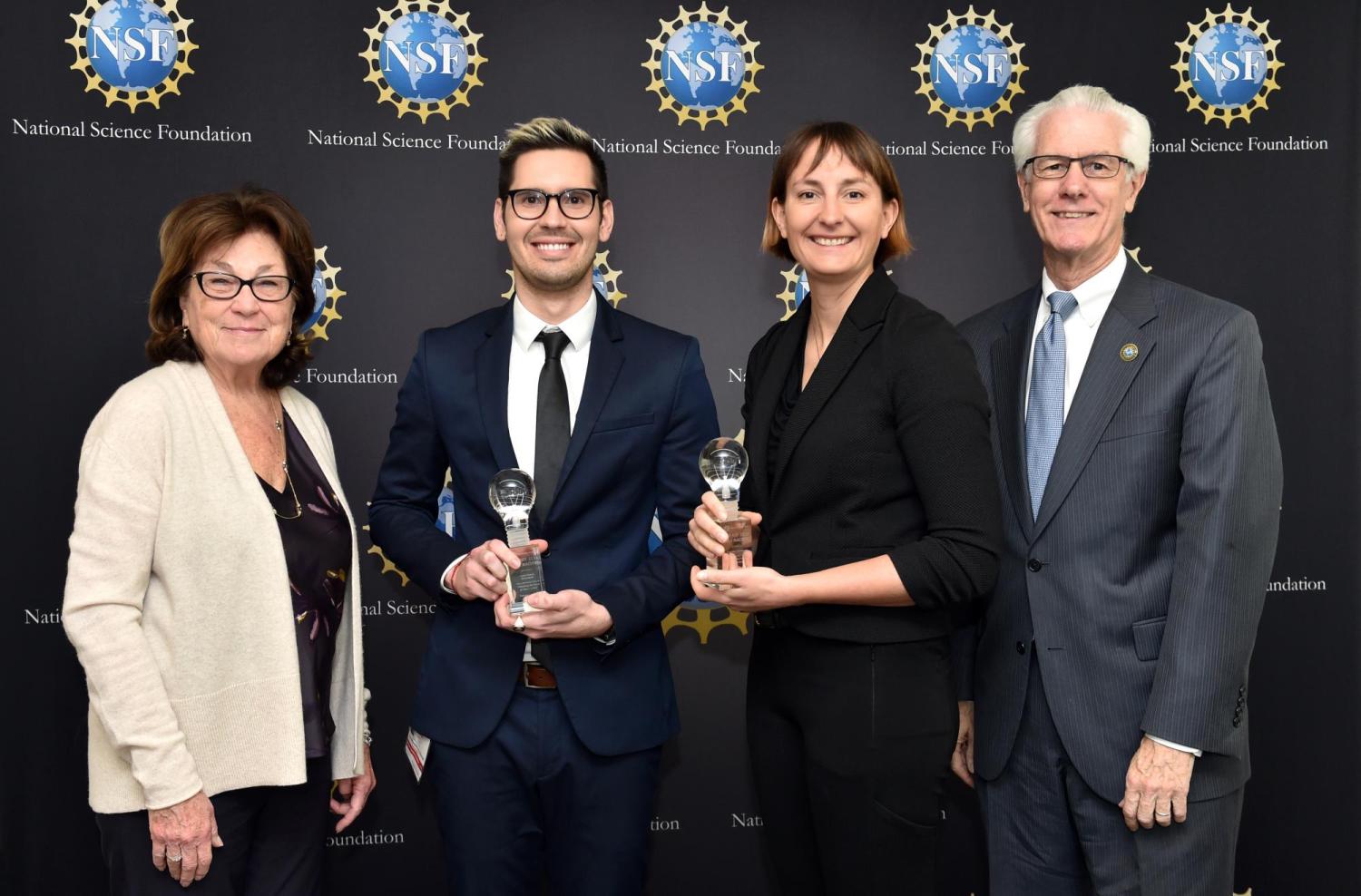Alumni place in top 7 of NSF Idea Machine competition

From left: Suzi Iacono, head of NSF’s Office of Integrative Activities; Juan Pablo Gevaudan, affiliate professor at Pennsylvania State University; Chelsea Heveran, assistant professor at Montana State University; and F. Fleming Crim, NSF’s chief operating officer. Photo Credit: Bill Petros Photography
A big idea that got its start at CU Boulder has placed in the top seven out of more than 800 submissions in the National Science Foundation 2026 Idea Machine competition.
Juan Pablo “JP” Gevaudan (M, PhDArchEngr’19) and Chelsea Heveran (PhDMechEngr’17) submitted their research idea to combat fixed and aging infrastructure built in past centuries as more urban growth occurs.
Their research will combine approaches from materials science, robotics, computer science, civil engineering, architectural engineering and mechanical engineering to enable the development of new building materials and automated construction systems.
Gevaudan will pursue his part of the research, focused on developing novel materials produced from local resources and capable of adapting to extreme environments, in his Responsive and Adaptive Infrastructure Materials lab at Pennsylvania State University. He will start a faculty position there in 2021 once he completes his Marie Skłodowska-Curie Research Fellowship at the University of Leeds.
Heveran is an assistant professor of mechanical and industrial engineering at Montana State University. Her team works to create sustainable and multi-functional building materials that are inspired by — or directly employ — biomineralization.
While at CU Boulder, Gevaudan’s doctoral research focused on the chemical durability of novel construction materials, namely alkali-activated cements.
“My primary motivation to focus on this research area was to rethink how we build our current infrastructure,” Gevaudan said. “I wanted to help create new funding mechanisms to envision research on construction materials that can be synthesized from a variety of local resources, respond by removing pollutants from our contaminated cities and adapt to our global environmental changes.”
The inaugural Idea Machine competition encouraged anyone over the age of 14 to submit pressing “grand challenges” requiring fundamental research in science, engineering or STEM education in order to inform NSF’s long-term planning.
Placing in the top seven earned Gevaudan and Heveran a $10,000 prize.
“It is an honor to have a national platform to envision a new scientific paradigm of resource-independent infrastructure to inspire a new generation of engineers and scientists,” Gevaudan said.
Gevaudan attributes his win in part to the interdisciplinary research opportunities he got at CU Boulder.
“The wealth of opportunities and creative freedom allowed to explore different scientific aims was unique to my experience at CU,” he said. “Working with environmental engineers as well as colleagues from chemistry, geological sciences and other engineering sciences permitted a transformative cross-pollination of research ideas. This, in turn, has helped me succeed by connecting multiple lines of knowledge to solve our most critical challenges in modern concrete technology in a creative manner.”
Gevaudan also had advice for students looking to take their research further after graduation.
“Be proactive. Muster the moxy that is required for you to think outside of the box and solve the challenges in front of you,” he said. “Oftentimes, we are stuck by trying to solve the same problems in the same way that others are doing it. There is a great potential that must be leveraged by connecting to other disciplines and learning how they have solved similar (or different) issues.”


